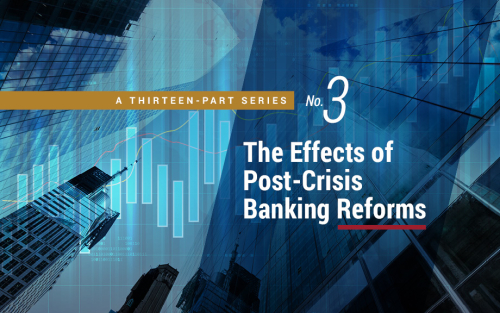Resolving “Too Big to Fail”

Many market participants believe that large financial institutions enjoy an implicit guarantee that the government will step in to rescue them from potential failure. These “Too Big to Fail” (TBTF) issues became particularly salient during the 2008 crisis. From the government’s perspective, rescuing these financial institutions can be important to avoid harm to the financial system. The bailouts also artificially lower the risk borne by investors and the financing costs of big banks. The Dodd-Frank Act attempts to remove the incentive for governments to bail out banks in the first place by mandating that each large bank file a “living will” that details its strategy for a rapid and orderly resolution in the event of material distress or failure without disrupting the broader economy. In our recent New York Fed staff report, we look at whether living wills are effective at reducing the cost of implicit TBTF bailout subsidies.
What Do Bond Markets Think about “Too‑Big‑to‑Fail” Since Dodd‑Frank?
As we discussed in our post on Monday, the Dodd-Frank Act includes provisions to address whether banks remain “too big to fail.”










 RSS Feed
RSS Feed Follow Liberty Street Economics
Follow Liberty Street Economics